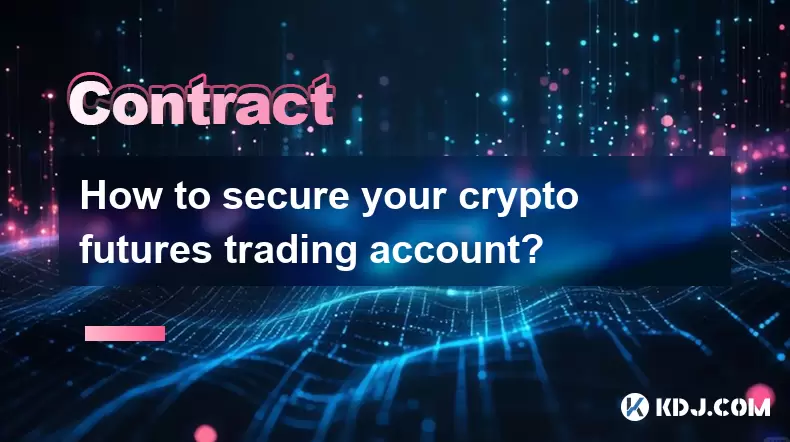-
 Bitcoin
Bitcoin $119300
1.07% -
 Ethereum
Ethereum $3730
3.87% -
 XRP
XRP $3.235
0.29% -
 Tether USDt
Tether USDt $1.000
0.00% -
 BNB
BNB $783.5
1.88% -
 Solana
Solana $188.7
0.25% -
 USDC
USDC $0.0000
-0.01% -
 Dogecoin
Dogecoin $0.2399
-0.44% -
 TRON
TRON $0.3157
2.37% -
 Cardano
Cardano $0.8254
1.94% -
 Hyperliquid
Hyperliquid $42.83
0.14% -
 Stellar
Stellar $0.4372
3.21% -
 Sui
Sui $3.859
4.91% -
 Chainlink
Chainlink $18.53
3.53% -
 Hedera
Hedera $0.2464
0.01% -
 Bitcoin Cash
Bitcoin Cash $519.8
2.46% -
 Avalanche
Avalanche $24.24
2.17% -
 Litecoin
Litecoin $113.7
0.73% -
 UNUS SED LEO
UNUS SED LEO $8.990
0.30% -
 Shiba Inu
Shiba Inu $0.00001390
0.21% -
 Toncoin
Toncoin $3.188
1.49% -
 Ethena USDe
Ethena USDe $1.001
0.02% -
 Polkadot
Polkadot $4.090
-0.91% -
 Uniswap
Uniswap $10.40
4.08% -
 Monero
Monero $326.6
3.12% -
 Bitget Token
Bitget Token $4.627
-0.42% -
 Pepe
Pepe $0.00001281
0.76% -
 Dai
Dai $1.000
0.01% -
 Aave
Aave $291.6
0.98% -
 Cronos
Cronos $0.1269
7.26%
How to secure your crypto futures trading account?
Crypto futures trading carries significant risks like market volatility, margin liquidation, and security threats, making strong authentication, secure devices, and vigilant monitoring essential for protecting your assets.
Jul 21, 2025 at 11:42 pm

Understanding the Risks in Crypto Futures Trading
Crypto futures trading involves significant risks due to market volatility and leverage. Your trading account can be exposed to hacking, phishing, or even margin liquidation if not managed carefully. Understanding these risks is the first step toward securing your assets. Unlike spot trading, futures contracts allow traders to speculate on price movements without owning the underlying asset, but this comes with increased complexity and exposure to sudden market shifts. It’s crucial to recognize how external and internal threats can compromise your account security.
Securing Your Account with Strong Authentication Methods
To protect your crypto futures trading account, you must implement strong authentication measures. Two-factor authentication (2FA) is a minimum requirement for any serious trader. Use apps like Google Authenticator or Authy instead of SMS-based 2FA, as the latter is vulnerable to SIM-swapping attacks.
- Enable hardware-based authentication if supported by the exchange
- Use a unique, complex password for your account
- Avoid reusing passwords across multiple platforms
Many platforms also offer multi-signature authentication, which requires multiple approvals before executing sensitive actions. This feature adds an extra layer of protection, especially for accounts with significant holdings.
Protecting Your Device and Network Environment
Your trading environment plays a vital role in securing your crypto futures account. Ensure your device is free from malware and keyloggers that can steal your login credentials or manipulate your trades. Always use updated antivirus software and avoid downloading unverified files or clicking on suspicious links.
- Use a dedicated device for crypto trading
- Install a reputable firewall and anti-malware program
- Avoid public Wi-Fi networks when accessing your account
If you're trading from a public or shared network, consider using a Virtual Private Network (VPN) to encrypt your internet traffic. However, choose a trustworthy and no-log VPN service to prevent data leaks.
Managing API Keys and Third-party Integrations
Many traders use third-party tools or bots to automate trading strategies. While this can enhance efficiency, improperly managed API keys can pose a serious threat to your account security.
- Only grant necessary permissions to API keys
- Avoid giving full withdrawal access to third-party services
- Regularly rotate or revoke unused API keys
Always store API keys in encrypted storage or a password manager rather than plain text files or unsecured notes. If your API keys are compromised, attackers can execute trades or drain your funds without needing your login credentials.
Monitoring Account Activity and Setting Alerts
Regular monitoring of your account activity is essential to detect unauthorized access or suspicious behavior. Set up real-time notifications for login attempts, trades, and withdrawals. Most exchanges offer customizable alert settings that can be tailored to your preferences.
- Review login history for unfamiliar devices or locations
- Enable email and push notifications for critical actions
- Use third-party monitoring tools if available
By staying vigilant and proactive, you can quickly respond to any potential breaches before they escalate into significant losses.
Storing Funds Securely When Not Trading
Keeping large amounts of funds in your futures trading account increases the risk of loss. Transfer unused funds to a cold wallet or a separate spot account with enhanced security measures.
- Use hardware wallets like Ledger or Trezor for long-term storage
- Avoid keeping leverage-enabled funds in your trading wallet
- Only keep the necessary balance for active trading positions
This strategy reduces the impact of potential breaches and ensures that only the required amount is exposed to market risks.
Frequently Asked Questions
Q: Can I use the same 2FA app for multiple exchange accounts?
Yes, you can use the same 2FA app such as Google Authenticator or Authy for multiple accounts. However, ensure that you back up your recovery codes and do not lose access to the device where the app is installed.
Q: Is it safe to store API keys in a spreadsheet?
No, storing API keys in a plain spreadsheet is not secure and highly discouraged. Instead, use a reputable password manager with encryption to store sensitive keys and credentials.
Q: Should I enable margin trading on all my accounts?
Only enable margin trading if you fully understand the risks involved. It’s recommended to start with small positions and disable margin features on accounts where they are not actively used.
Q: How often should I review my account security settings?
Review your account security settings at least once every month. This includes checking login history, updating passwords, rotating API keys, and ensuring that all security features remain enabled.
Disclaimer:info@kdj.com
The information provided is not trading advice. kdj.com does not assume any responsibility for any investments made based on the information provided in this article. Cryptocurrencies are highly volatile and it is highly recommended that you invest with caution after thorough research!
If you believe that the content used on this website infringes your copyright, please contact us immediately (info@kdj.com) and we will delete it promptly.
- Bitcoin, Jim Cramer, and the US Deficit: A Wall Street Story
- 2025-07-25 10:30:11
- TGEs, Scalability & Privacy Tech: Decoding the Future of Blockchain
- 2025-07-25 10:30:11
- Ben Askren, FUNKY Memecoin, and the Fallout: A New York Minute
- 2025-07-25 10:50:11
- TRON, Crypto Payroll, and Stablecoins: A New York Minute on the Future of Finance
- 2025-07-25 08:30:11
- WazirX, Revote, and Crypto Unlock: A New York Minute on the Latest Developments
- 2025-07-25 06:50:11
- Hong Kong Stablecoin Regulation: Navigating the Hype and Hurdles
- 2025-07-25 08:30:11
Related knowledge

Why is my Bitstamp futures position being liquidated?
Jul 23,2025 at 11:08am
Understanding Futures Liquidation on BitstampFutures trading on Bitstamp involves borrowing funds to open leveraged positions, which amplifies both po...

Does Bitstamp offer inverse contracts?
Jul 23,2025 at 01:28pm
Understanding Inverse Contracts in Cryptocurrency TradingIn the realm of cryptocurrency derivatives, inverse contracts are a specific type of futures ...

How to find your Bitstamp futures trade history?
Jul 23,2025 at 08:07am
Understanding Bitstamp and Futures Trading AvailabilityAs of the current state of Bitstamp’s service offerings, it is critical to clarify that Bitstam...

Can I use a trailing stop on Bitstamp futures?
Jul 23,2025 at 01:42pm
Understanding Trailing Stops in Cryptocurrency TradingA trailing stop is a dynamic type of stop-loss order that adjusts automatically as the price of ...

Can I use a trailing stop on Bitstamp futures?
Jul 25,2025 at 02:28am
Understanding Trailing Stops in Cryptocurrency Futures TradingA trailing stop is a dynamic type of stop-loss order that adjusts automatically as the m...

What are the trading hours for Bitstamp contracts?
Jul 24,2025 at 11:56am
Understanding Bitstamp and Contract Trading AvailabilityBitstamp is one of the longest-standing cryptocurrency exchanges, established in 2011 and head...

Why is my Bitstamp futures position being liquidated?
Jul 23,2025 at 11:08am
Understanding Futures Liquidation on BitstampFutures trading on Bitstamp involves borrowing funds to open leveraged positions, which amplifies both po...

Does Bitstamp offer inverse contracts?
Jul 23,2025 at 01:28pm
Understanding Inverse Contracts in Cryptocurrency TradingIn the realm of cryptocurrency derivatives, inverse contracts are a specific type of futures ...

How to find your Bitstamp futures trade history?
Jul 23,2025 at 08:07am
Understanding Bitstamp and Futures Trading AvailabilityAs of the current state of Bitstamp’s service offerings, it is critical to clarify that Bitstam...

Can I use a trailing stop on Bitstamp futures?
Jul 23,2025 at 01:42pm
Understanding Trailing Stops in Cryptocurrency TradingA trailing stop is a dynamic type of stop-loss order that adjusts automatically as the price of ...

Can I use a trailing stop on Bitstamp futures?
Jul 25,2025 at 02:28am
Understanding Trailing Stops in Cryptocurrency Futures TradingA trailing stop is a dynamic type of stop-loss order that adjusts automatically as the m...

What are the trading hours for Bitstamp contracts?
Jul 24,2025 at 11:56am
Understanding Bitstamp and Contract Trading AvailabilityBitstamp is one of the longest-standing cryptocurrency exchanges, established in 2011 and head...
See all articles

























































































